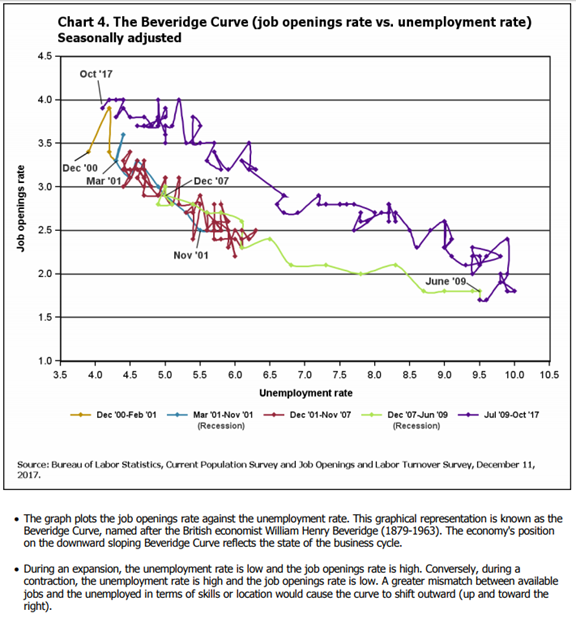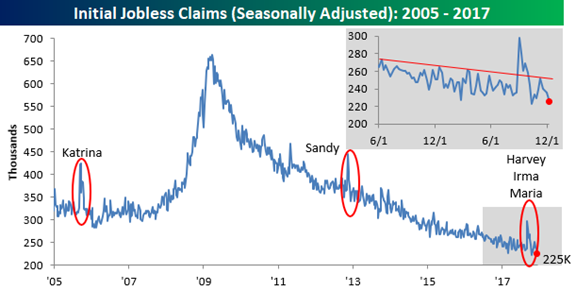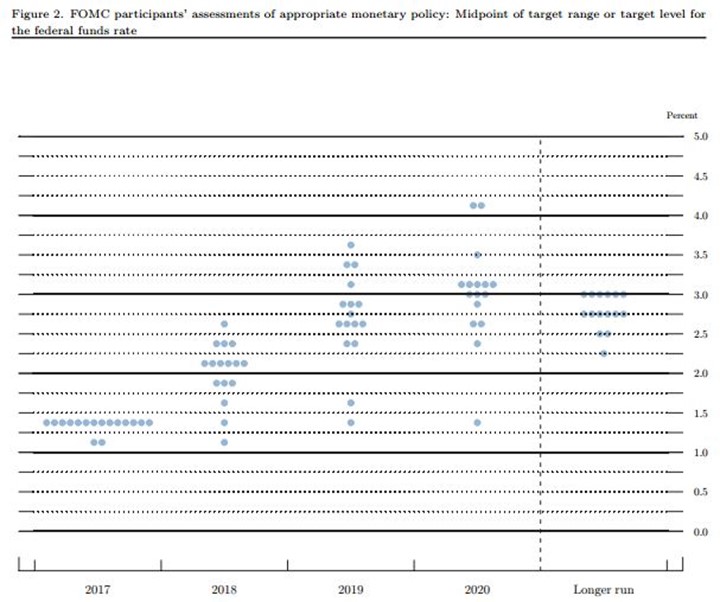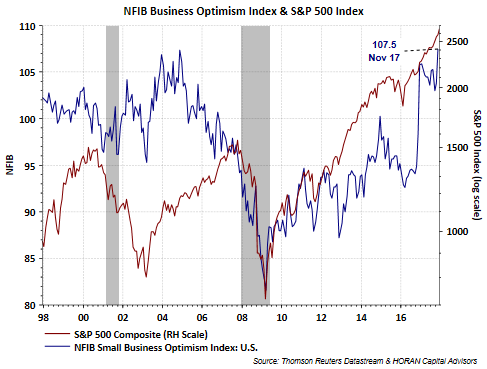The economic calendar is loaded, especially with reports on housing. Despite this, the calendar and recent events will stimulate pundits to get out their crystal balls. I expect many to be asking:
Can the rally in stocks find fresh legs in 2018?
Last Week Recap
In the last edition of WTWA I observed that Santa might need a GPS to deliver on the typical year-end rally. The various sideshows – the Alabama election, the Fed meeting, the tax cut saga – played out and the market celebration continued.
The Story in One Chart
I always start my personal review of the week by looking at a great chart. Jill Mislinski’s weekly version is first-rate, pulling together several key points in a single look. She notes the new record for the market in addition to the daily moves. Friday’s rally was the key feature of the week. Her article also takes note of the big increase in volatility this week.

Despite the excitement of the record high and Friday’s trading, the weekly trading range was again less than one percent.
The News
Each week I break down events into good and bad. For our purposes, “good” has two components. The news must be market friendly and better than expectations. I avoid using my personal preferences in evaluating news – and you should, too!
The economic news continues to be strong. New Deal Democrat notes a small deterioration in his long-range indicators. Take a look, as I do every week, at his helpful list of high-frequency indicators as well as his summary. For those of us with a serious interest in the economy, it is an efficient way to see items you would otherwise miss.
The Good




The Bad
Not much bad news last week. Feel free to add comments about anything I missed.


The Ugly
Student loans. Nearly 5 million students in default, double that of last year? Despite a strengthening economy? (WSJ). Student loans account for the largest asset of the U.S. government, $1.37 trillion. That includes only debt that is at the repayment stage. Mrs. OldProf (a former banker) sees this as a big problem. We need the contributions of graduates. Taking away their bank accounts and professional licenses does not help on that front. She notes that there are precedents for leniency as an incentive to take certain jobs or to work in certain locations. It is a very challenging issue.
Noteworthy
Wired has a great article on the increase in data collection and integration in China. Some will find it disturbing, but everyone should be interested. Imagine that you had a score, relevant for credit, and various other perks. It was influenced by whom you chose as friends. And so were their scores. Would it affect your choice of friends? Even George Orwell could not have imagined this! And how close are US methods?
The Week Ahead











Leave A Comment